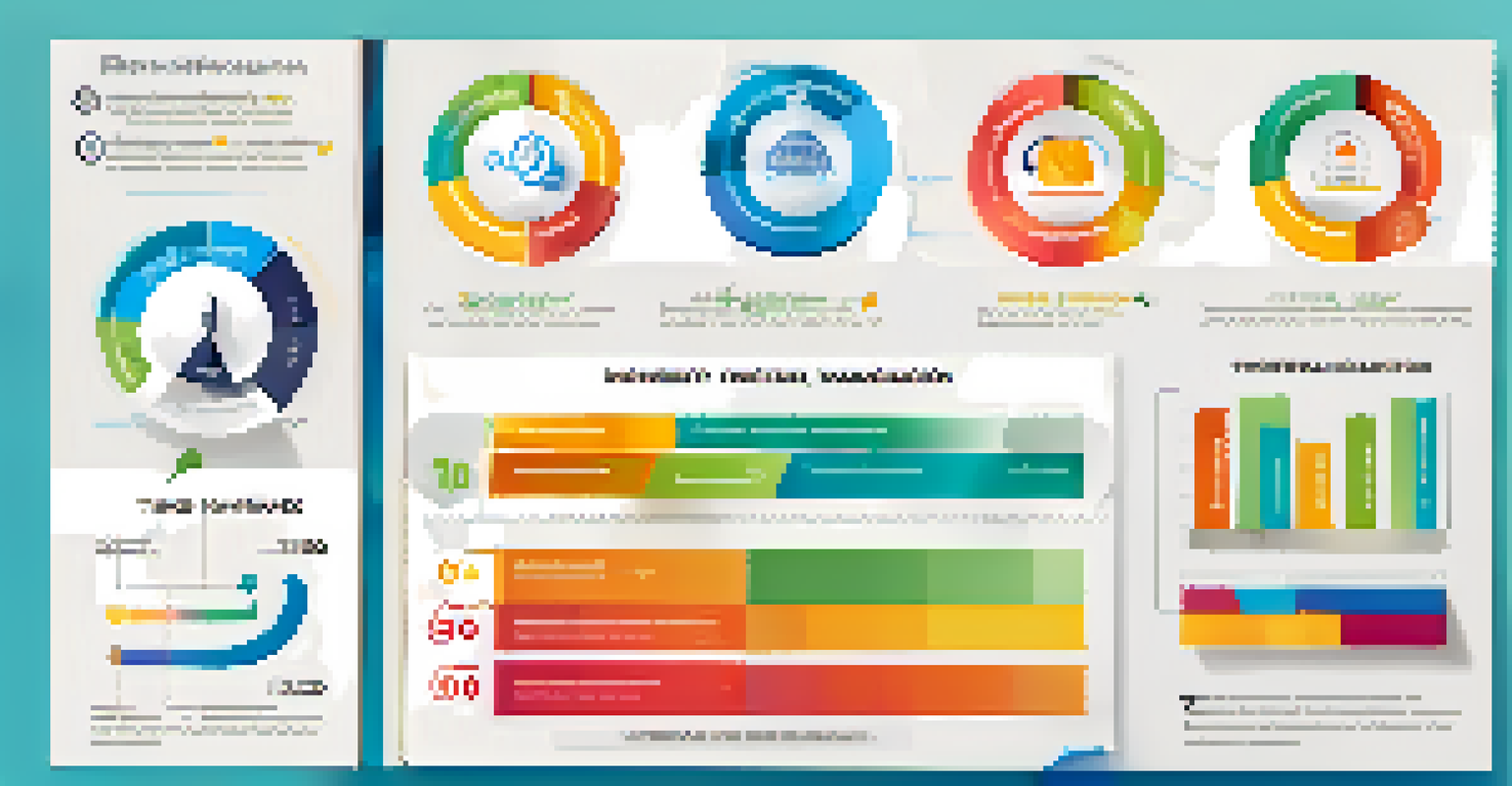Measuring the ROI of Your Digital Asset Management System

Understanding ROI: What It Means for Your Business
Return on Investment (ROI) is a crucial metric that helps businesses evaluate the profitability of an investment. In the context of a Digital Asset Management (DAM) system, ROI can be interpreted as the value gained from its implementation compared to the costs incurred. By understanding ROI, you can make informed decisions about your digital assets and their management.
What gets measured gets managed.
Measuring ROI isn’t just about the money saved; it also encompasses time efficiency and improved collaboration. For example, if your DAM system reduces the time employees spend searching for assets, that time savings translates into greater productivity. This holistic view of ROI is essential for a comprehensive analysis of your DAM system’s impact.
Ultimately, knowing how to measure ROI sets the stage for deeper insights into your digital strategy. It allows you to justify expenses, optimize resource allocation, and even identify areas for improvement within your DAM processes.
Key Metrics to Track for DAM ROI
To effectively measure the ROI of your DAM system, you need to focus on specific metrics. Common metrics to track include time saved in asset retrieval, reduction in asset duplication, and increased usage of digital assets. Each of these metrics provides a quantifiable way to assess the system’s impact on your organization.

For instance, if your team used to spend hours searching for the right images and now finds them in minutes, you can calculate the time saved and assign a monetary value to that time. Additionally, tracking user engagement can give insights into how often assets are utilized, which can help justify the investment in the DAM system.
Measuring ROI for DAM Success
Understanding and measuring ROI helps businesses justify expenses and optimize resource allocation for digital asset management.
By consistently monitoring these metrics, you can create a clear picture of how your DAM system is performing. This information is not only valuable for internal assessments but also serves as essential data when discussing future upgrades or enhancements.
Calculating Cost Savings from Efficient Asset Management
One of the most tangible ways to measure ROI is by calculating cost savings. Consider the expenses related to redundant asset creation, storage costs, and wasted license fees. By centralizing your assets in a DAM system, you can significantly reduce these costs and improve your bottom line.
Time is money.
For example, if your organization previously incurred expenses from licensing duplicate assets, consolidating these into a single, easily accessible DAM can eliminate those unnecessary fees. This not only saves money but also streamlines your workflow, allowing your team to focus on more strategic tasks.
Overall, identifying and quantifying these cost savings can provide compelling evidence of your DAM’s value. It helps reinforce the argument for continued investment in digital asset management solutions.
Assessing Time Savings for Increased Productivity
Time is often considered the most valuable resource in any business, and a DAM system can significantly enhance productivity by saving time. By centralizing digital assets, teams can quickly find the materials they need, minimizing downtime and frustration. This efficiency leads to faster project turnaround and better overall performance.
Consider a scenario where your marketing team used to spend hours sourcing images for a campaign. With a DAM in place, they can now access a wealth of pre-approved assets in minutes. This time saved not only boosts morale but also allows for more projects to be completed, directly impacting revenue generation.
Time Savings Boost Productivity
Centralizing digital assets in a DAM system saves time, leading to increased productivity and faster project turnaround.
When measuring ROI, quantifying the time savings and translating that into productivity gains is essential. This approach can clearly illustrate the positive effects of your DAM system on your organization’s efficiency.
Improving Collaboration Across Teams
A well-implemented DAM system fosters collaboration among different teams by providing a shared platform for accessing and managing assets. This centralization ensures everyone is on the same page, which can lead to improved communication and teamwork. When teams collaborate more effectively, the overall quality of work improves.
For example, if your design and marketing teams can easily share and access assets, they can create more cohesive campaigns. This streamlined collaboration not only enhances creativity but also reduces the likelihood of miscommunication, which can be costly.
By measuring the impact of improved collaboration on project outcomes, you can gauge the ROI of your DAM system. This metric goes beyond numbers and reflects the positive cultural changes that a DAM can bring to an organization.
Evaluating User Engagement and Adoption Rates
User engagement is a crucial metric in assessing the effectiveness of your DAM system. High engagement levels indicate that employees find value in the system and are actively using it to manage digital assets. Monitoring adoption rates can help you understand how well the system meets users' needs and identify areas for improvement.
For example, if you notice that certain departments are not fully utilizing the DAM system, it may indicate a need for additional training or resources. Engaging users can lead to higher satisfaction levels and encourage widespread adoption, ultimately impacting the ROI of your system.
User Feedback Enhances DAM Systems
Gathering user feedback is crucial for refining DAM systems, ensuring they meet needs and drive higher returns on investment.
By regularly evaluating user engagement and adoption rates, you can make informed decisions about future updates and enhancements to your DAM system. This ongoing analysis ensures that your investment continues to yield positive returns.
Using Feedback to Enhance Your DAM System
Gathering feedback from users is a vital part of measuring the ROI of your DAM system. By understanding their experiences, you can identify pain points and areas for improvement. This user-centric approach not only enhances system performance but also boosts employee satisfaction and engagement.
For instance, if employees feel that the search functionality isn’t meeting their needs, addressing this issue can lead to significant improvements in their daily workflows. Incorporating user feedback allows you to make adjustments that will enhance the overall effectiveness of your DAM.

Ultimately, using feedback to refine your DAM system can yield a higher ROI. By aligning the system with users' needs, you create a more efficient, user-friendly environment that drives better results for your organization.